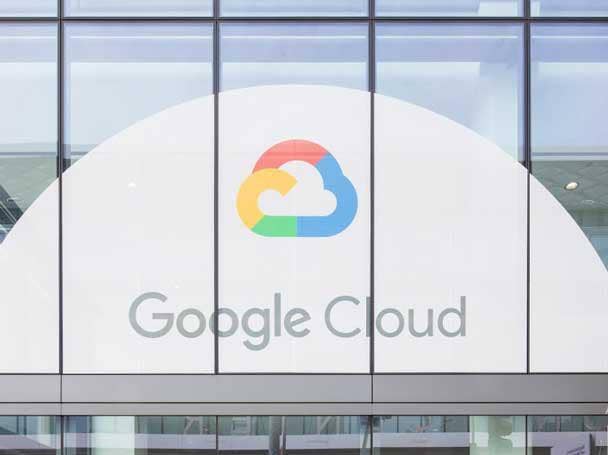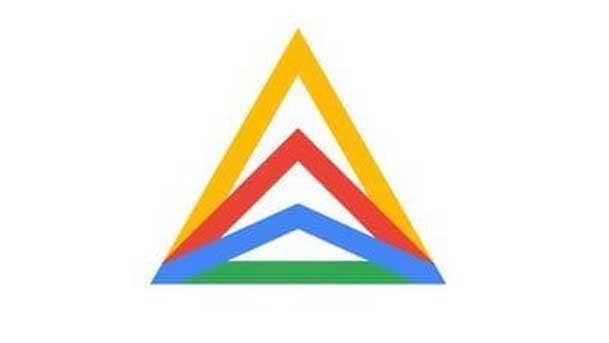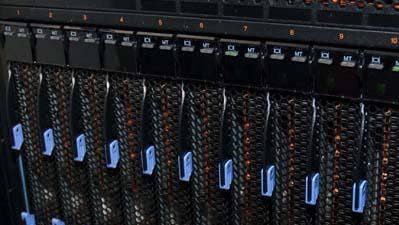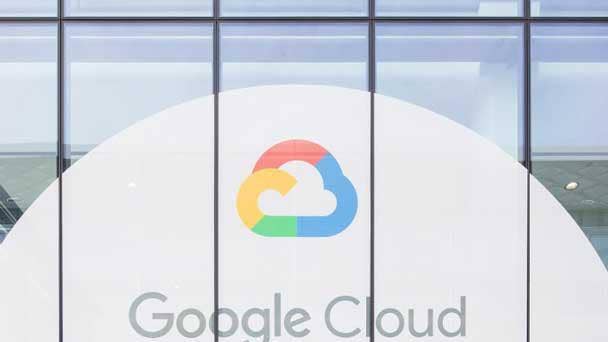Google Cloud Anthos: Hybrid AI And 5 Other New Features
Google Cloud App Modernization Program (Google CAMP) also debuts as a program designed to fast-track organizations’ application modernization.

Google Cloud today introduced new features for Anthos – including artificial intelligence (AI) and Kubernetes cluster management capabilities – that are designed to make its hybrid and multi-cloud platform easier to use and handle more workloads.
The third-ranked cloud computing provider said it’s offering hybrid AI capabilities for Anthos to solve the problem of organizations being forced to rely on fragmented solutions across their on-prem data centers and clouds or limit their use of the technology.
“Whether it’s image recognition, pattern detection, conversational chatbots or any number of other emerging use cases for artificial intelligence, organizations are eager to incorporate AI functionality into their offerings,” Eyal Manor, general manager and vice president of engineering for Google Cloud, said in a blog post. “By bringing hybrid AI on-prem, you can now run your AI workloads near your data, all while keeping them safe.”
A constant challenge when attempting to leverage AI for customer experience is that the contextual data needed to train models is locked on-prem, yet the needed AI service framework and customer touchpoints reside outside the data center for scaling and accessibility, according to Chris Garvey, executive vice president of product at 2nd Watch, a Seattle-based Google Cloud partner with certifications in hybrid cloud infrastructure and service mesh with Anthos.
“ The new hybrid AI offerings available for Anthos resolves this issue by bringing the power of AI on-prem, closer to the data, and then allowing for seamless deployment back out to the cloud or edge without sacrificing data security and compliance,” Garvey said.
Google Cloud also debuted Google Cloud App Modernization Program (Google CAMP), which is designed to fast-track organizations’ application modernization.
“We built (Google CAMP) to help you innovate faster, so you can reach your customers with world-class, secure, reliable applications, all while saving on costs,” Manor said. “Google CAMP does this with a consistent development and operations experience, tools, best practices and industry leading-guidance on how to develop, run, operate and secure applications.”
Google Cloud announced the new Anthos features and Google CAMP as part of its nine-week Next ’20: OnAir virtual conference, which this week is focused on application modernization in its seventh week.
Here’s a look at what you need to know about the new updates for Google Cloud Anthos, which was unveiled in April 2019.

Speech-to-Text On-Prem
Speech-to-Text On-Prem -- Google Cloud’s first hybrid AI product – allows for easy integration of Google speech-recognition technologies in users’ on-premises solutions.
It gives users complete control – from within their own data centers -- of speech data protected by data residency and compliance requirements.
The machine learning technology leverages Google-developed speech recognition models that the cloud provider says are more accurate and smaller in size, and require fewer computing resources to run, than other solutions. The application can be deployed as a container to any Google Kubernetes Engine (GKE) or Anthos cluster.
Key capabilities include high-quality transcription using Google’s deep learning neural network algorithms. Speech-to-Text On-Prem can be deployed efficiently with models that are less than 1 GB in size and consume minimal resources, and it’s fully compatible with Google Cloud’s Speech-to-Text API and client libraries. Customers can use Google Cloud’s pre-built Istio objects to seamlessly scale up to thousands of connections. The application also is integrated with Operations (formerly Stackdriver), and metadata logs can be exported to one centralized location.
The new offering currently supports five languages: English, Cantonese, French, Japanese and Spanish.
It’s generally available on Anthos via the Google Cloud Marketplace.

Anthos Attached Clusters
New Anthos attached clusters allow users to manage any Kubernetes cluster with the Anthos control plane, including centralized management for configuration and service mesh capabilities.
Attaching clusters allows users to view existing Kubernetes clusters in Anthos with their Anthos GKE clusters, and it enables a subset of Anthos features on them, including Anthos Service Mesh and Anthos Config Management.
Current clusters types that can be attached to Anthos are Amazon Elastic Kubernetes Service (Amazon EKS) on Kubernetes version 1.16 and Microsoft Azure Kubernetes Service (Microsoft AKS) on Kubernetes version 1.16.

Anthos For Bare Metal
Anthos for bare metal is a deployment option that lets Anthos run on physical servers on premises and at edge locations and telco sites without a hypervisor layer and the associated latency.
“Anthos for bare metal provides a lightweight, cost-effective platform that minimizes unnecessary overhead and opens up new cloud and edge use cases,” Manor said in his blog post. “In fact, Google is itself an early adopter for Anthos for bare metal, working towards using it as a platform to run containers internally for our production workloads.”
Anthos for bare metal lets users run computationally intensive applications such as GPU-based video processing and machine learning in a CapEx- and OpEx-effective manner, Anthos product manager Amr Abdelrazik said in a blog post.
“This means that you can access all the benefits of Anthos -- centralized management, increased flexibility and developer agility -- for your most demanding applications,” he said.
Anthos for bare metal includes built-in networking, lifecycle management, diagnostics, health checks, logging and monitoring, and it supports CentOS, Red Hat Enterprise Linux (RHEL) and Ubuntu.
It’s now in beta, which means it can be used without access controls, but it does not come with service-level agreement or technical support obligations.

New Developer Capabilities
Google Cloud has joined its Cloud Code integrated development environment (IDE) plugins with Cloud Run for Anthos, allowing developers to build serverless applications directly from IDEs such as VS Code and Intellij.
Java, Node.js, Python and Go are the supported programming languages.
“Once you’ve written your code, the new Cloud Code-Cloud Run emulator lets you quickly validate local changes on your own machine, with automated re-deploys on every saved code change,” Manor said. “You can even use this emulator to locally debug your Cloud Run apps. When your code is ready, you can push changes directly to a remote dev environment in the cloud, right from the IDE.”
With Cloud Run for Anthos enabled, Cloud Code also lets users create Kubernetes clusters right from within their IDE, pre-populating key details like project ID, zone/region, number of nodes, etc., he said.

Anthos Identity Service
Google Cloud introduced a new security feature with Anthos Identity Service, which extends users’ existing identity solutions to work seamlessly with Anthos workloads.
“ With support for OpenID Connect – generally available on-prem and in beta for Anthos on AWS -- you can leverage your existing identity investments and enable consistency across environments,” said Manor, who noted support for additional protocols are expected in the coming months.
Anthos Identity Service LDAP authentication now is available for GKE on-prem in alpha for testing by select customers.

New Migrate for Anthos Features
Google Cloud added new capabilities to allow customers to more easily migrate workloads to the Anthos platform, even when they don’t have access to source codes.
Migrate for Anthos, which is used for migrating workloads to GKE, now includes build migration automation using a new customer resource definition-based API to integrate with customers’ custom processes and tooling.
That enables support for Anthos deployed on prem, so users can convert virtual machines running on prem and keep them there, as well as support for Windows containers -- in beta – for users who want to start converting their Windows workloads. It also allows for integration into the Google Cloud Console web admin user interface to make it easier to monitor ongoing migrations or perform multiple migrations at once.
Google Cloud also added a new migration feature that makes it easier to migrate workloads from Cloud Foundry, an open-source cloud application platform. That feature uses Kf on Anthos, which gives developers a Cloud Foundry-like interface on top of Anthos.
“The release of support for the Kf-interface on Anthos will reinvigorate modernization programs that might be stuck given an overly complex earlier investment in Cloud Foundry,” 2nd Watch’s Garvey said. “This will minimize reskilling and offer all the underlying operational simplifications that Anthos provides.”

Google CAMP
Anthos is a key component of Google CAMP.
Google CAMP is based on Google Cloud’s experience with application delivery with speed and at scale – including deploying 12 million builds and running 650 million test cases daily, and processing 2.5 exabytes of logs every month and parsing 14 quadrillion monitoring metrics -- according to Google Cloud product management director Oren Teich. It’s also based on six years of research by Google’s DevOps Research and Assessment (DORA) team.
“Google CAMP allows large enterprises to modernize application development and delivery and drive improvements in speed, which directly drives a business’ bottom line,” Teich said in a blog post. “DORA’s research with over 31,000 IT
professionals highlights that elite teams that ship code numerous times a day are 1.53 times more likely to achieve or exceed their commercial goals, including profitability, and market share.”
Google CAMP includes tailored modernization advice gained through a data-driven assessment, and concrete solutions, and recommendations and best practices for application modernization, such as alignment between developers and operators, lean product development and technical practices including implementing loosely coupled architectures and continuous testing. It leverages the Google Cloud Platform for each step of the application life cycle, from writing code to running, operating and securing applications, according to Teich.
The baseline assessment will show customers where to start their application modernization journey, identify priorities and maximize their return on investment.
“You can benchmark yourself against other lines of business in your company, the overall IT industry or the elite performers,” Teich said.
Customers interested in undergoing a Google CAMP assessment should reach out to their Google Cloud sales representative.